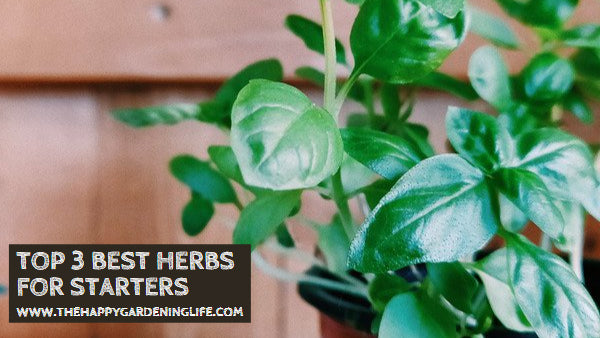
Top 3 Best Herbs for Starters
Share
 Herbs are one of the main ingredients that make your food so tasteful. Because some of the herbs sold at stores are not always certified organic, you should probably avoid buying them there. Those are not guaranteed fresh and healthy for the body, so it’s best to grow your own just like any home gardener would do.
Herbs are one of the main ingredients that make your food so tasteful. Because some of the herbs sold at stores are not always certified organic, you should probably avoid buying them there. Those are not guaranteed fresh and healthy for the body, so it’s best to grow your own just like any home gardener would do.
If you don’t know what herbs to plant in your garden, then start with these 3 popular herbs: basil, dill, and parsley.
Basil is one of the easiest herbs to grow because it can germinate quickly and be ready for harvest in just few days.
Dill is also very easy to grow in the garden. Like basil, it can germinate and grow very fast. After couple of days, you can begin to harvest this herb and add it to your favorite meals. Dill is perfect for making yummy soups, salads, and sauces.
Lastly, try parsley. It may take a while to start it from seed as it is one of the slowest herbs to develop. But parsley does become more flavorful once it has fully grown. This will help your dishes become even more delicious, so be sure to include it in your organic herb garden.
For more information about starter herbs, check out this article below and share it on Facebook, Twitter and Pinterest!
3 Easy Culinary Herbs to Grow from Seed
1. Basil
Fresh basil is versatile herb, as at home in a salad as in a soup, and while it may be best known as an integral component of pesto, it also lends a taste of summer to a variety of other recipes, from sandwiches to pizzas.
Sweet basil is the common variety that tends to be associated with Italian food, and there are number of different cultivars and hybrids of basil to choose from, each with a slightly different taste and appearance.
The other type of basil is Thai basil, which often has a licorice or anise flavor and is usually found in Asian cuisine, and which also comes in number of different cultivars.
Basil is one of the quicker herbs to germinate, and a great one to grow in pots, which can then be brought inside in the fall. If you find yourself with more basil than you know what to do with, fresh basil can be easily frozen or dried to preserve its summery flavor for use all winter long.
2. Dill
Dill is another herb that is quick to germinate and grow from seed, and which lends itself to a number of different dishes. Flavoring pickles is just one classic use of dill, but this herb goes well in salads, soups, potato dishes, bread, vegetable dips and sauces, and more.
The feathery leaves of fresh dill (sometimes called dill weed) add texture and contrast to the garden, and can be dried to preserve for the winter. If you allow the dill to flower and set seed, the dill seeds can also be harvested and used as a culinary spice.
Growing dill can also serve to attract wildlife and beneficial insects, which adds another element to a garden’s appeal. The dill plants in my garden have hosted large numbers of swallowtail caterpillars and butterflies every year that I grow them, and even after they’ve had their share to eat, plenty is leftover for us.
3. Parsley
Growing parsley from seeds takes a little bit of patience, as they tend to be one of the slower herbs to germinate, but when they begin to grow in earnest, are a great addition to kitchen gardens. Although this herb is a stereotypical garnish for some restaurant dishes, and one that is often left behind on the plate, parsley is quite a versatile and flavorful ingredient.
The two main types of parsley are curly parsley and flat leaf parsley (often called Italian parsley), the leaves of both of which can be cut again and again throughout the summer, and then left to overwinter (depending on the climate) to flower the next year, or pulled from the ground to harvest the large root as a vegetable.
Article Source: treehugger.com
